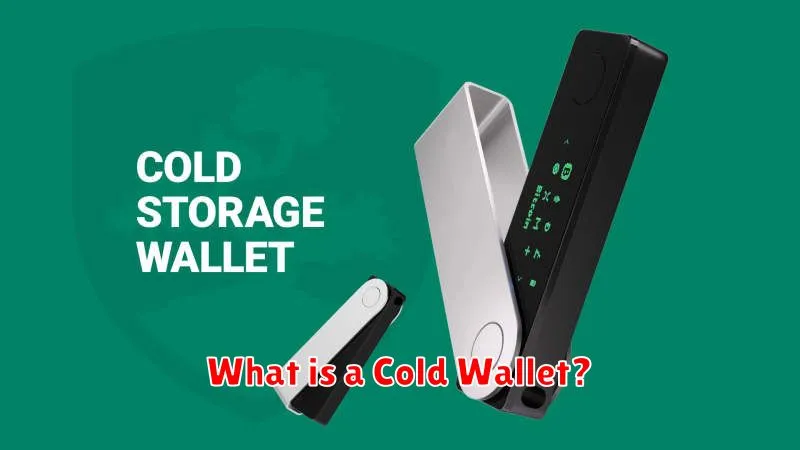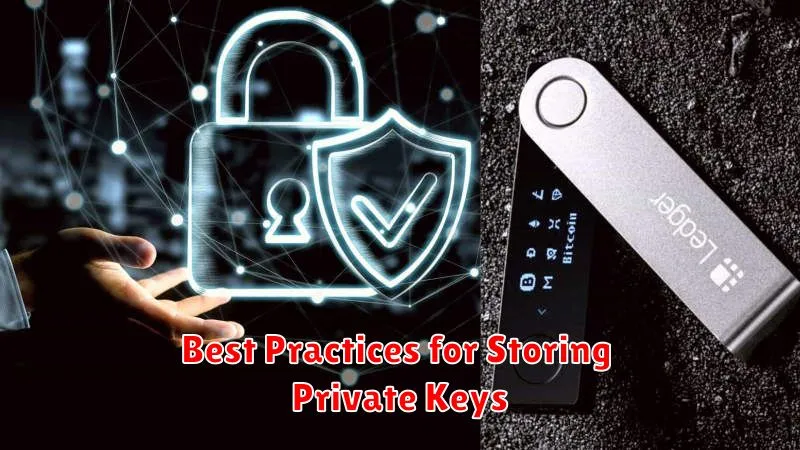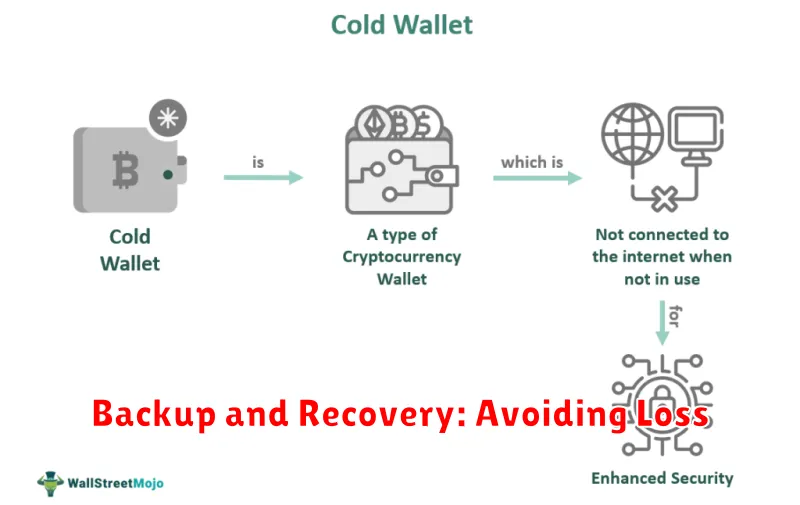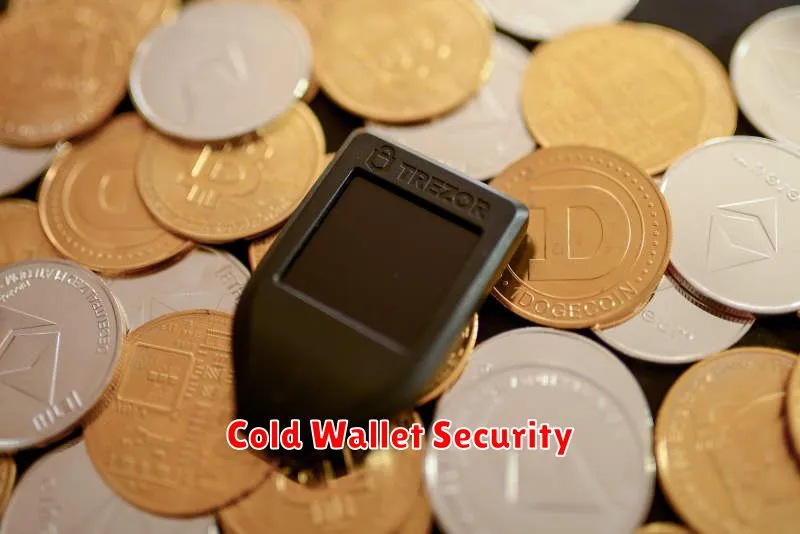Protecting your digital assets is paramount in the volatile world of cryptocurrency. This guide will delve into the intricacies of cold wallet security, providing a comprehensive understanding of how to safeguard your crypto investments. Learn how to choose the right cold storage solution, implement best practices for offline wallet security, and mitigate risks associated with hardware wallets and seed phrase management. Secure your Bitcoin, Ethereum, and other cryptocurrencies with our expert advice on cold wallet storage.
What is a Cold Wallet?

A cold wallet, also known as an offline wallet, is a type of cryptocurrency storage device that is not connected to the internet. This significantly reduces the risk of hacking and malware attacks, as the private keys are never exposed to online threats.
Unlike hot wallets (online wallets), cold wallets store your cryptocurrency offline, offering a much higher level of security. This makes them ideal for storing significant amounts of cryptocurrency or long-term holdings.
Cold wallets come in various forms, including hardware wallets (physical devices like USB drives) and paper wallets (printed QR codes containing your private keys). The choice depends on your level of technical expertise and security needs.
Key takeaway: The core benefit of a cold wallet is its enhanced security against online threats, making it a preferred choice for safeguarding significant cryptocurrency investments.
Hot vs Cold Wallets: Key Differences

The primary difference between hot and cold wallets lies in their connection to the internet. Hot wallets, such as software wallets or web wallets, are connected to the internet, offering convenience but increasing vulnerability to hacking and theft.
Conversely, cold wallets, including hardware wallets and paper wallets, are offline and thus significantly more secure. They offer superior protection against online threats but require more manual interaction for transactions.
Security is the key differentiator. Cold wallets provide substantially greater security due to their offline nature, while hot wallets prioritize ease of access and speed at the cost of increased risk.
Convenience is another critical aspect. Hot wallets are easily accessible and allow for quick transactions, whereas cold wallets involve more steps, making them less convenient for frequent trading.
The choice between hot and cold wallets depends on individual priorities. Users prioritizing security should opt for cold wallets, while those seeking ease of use might prefer hot wallets, accepting the inherent higher risk.
Best Practices for Storing Private Keys

Protecting your private keys is paramount to securing your cryptocurrency holdings. A compromised private key grants immediate access to your funds, resulting in irreversible loss.
Never store your private keys digitally on a device connected to the internet. This includes computers, smartphones, and tablets. Internet-connected devices are vulnerable to malware and hacking attempts.
Consider using a hardware wallet. These dedicated devices provide a secure offline environment for generating and storing your private keys. Ensure the reputable brand of your hardware wallet.
For paper wallets, print your private keys on high-quality paper and store them in a safe, fireproof location. Consider using multiple layers of security, such as a safety deposit box or a well-hidden location.
Avoid sharing your private keys with anyone. Legitimate services will never request your private keys. Treat your private keys like your bank PIN – confidential and secured.
Regularly back up your keys using a reliable method, but ensure the backup is as secure as the original. Losing your private keys means losing access to your cryptocurrency permanently.
Utilize strong passwords and enable two-factor authentication (2FA) wherever possible for added security to your wallet accounts.
Backup and Recovery: Avoiding Loss

Cold storage wallets, while highly secure, are not immune to loss. A malfunctioning device or physical damage can render your crypto inaccessible. Therefore, a robust backup and recovery plan is crucial.
Regular backups are paramount. This involves creating multiple copies of your seed phrase (or private keys) and storing them securely in separate, geographically diverse locations. Consider using a metal plate, encrypted USB drive, or a securely printed document stored in a fireproof safe.
Never store backups digitally on easily accessible devices, like your computer or phone, as these are vulnerable to theft or data loss. Also, avoid sharing your seed phrase with anyone.
Recovery involves utilizing your backups to restore access to your crypto in case of device failure or loss. Test your recovery process periodically to ensure its effectiveness and to familiarize yourself with the steps involved. This proactive approach will minimize the risk of irreversible loss.
Choosing the right backup method and employing diligent recovery planning are vital components of securing your crypto assets within a cold storage system. The security of your investment hinges on your preparation.
How to Transfer Crypto to a Cold Wallet

Transferring cryptocurrency to a cold wallet enhances security by moving your assets offline, making them inaccessible to hackers. The process involves generating a public address and a private key for your cold wallet. The public address is like your bank account number; you share this with senders. The private key is your secret password – keep it absolutely secure and offline.
First, obtain your cold wallet’s public address. This is typically found within the wallet’s interface after setting it up. Next, on your exchange or hot wallet (where your crypto currently resides), initiate a withdrawal. You’ll need to input the cold wallet’s public address as the recipient address. Double-check the address for accuracy before proceeding, as errors can lead to irreversible loss of funds.
After initiating the transfer, you’ll need to confirm the transaction. This usually involves authorizing the transaction through a security measure on your exchange or hot wallet, such as two-factor authentication (2FA). The transfer time varies depending on the cryptocurrency and the network’s congestion. Once the transaction is confirmed on the blockchain, your crypto will be securely stored in your cold wallet.
Important Considerations: Always prioritize security. Never share your private key with anyone. Back up your seed phrase (a sequence of words used to recover your wallet) securely, but keep it offline and separate from your cold wallet device. Regularly check your cold wallet’s balance to ensure the transfer was successful.

